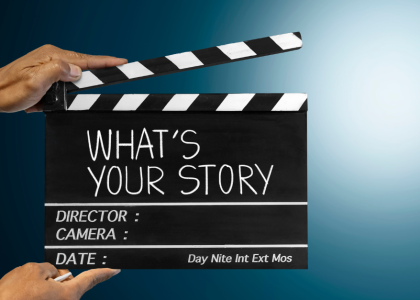This article focuses on leveraging audience insights to create engaging and relevant marketing content.
- The Content Conundrum: The challenge of creating content that resonates with a broad audience.
- The Power of Persona: The concept of buyer personas and how they help target specific audience segments. Why audience insights should inform the development of detailed personas that capture their needs, desires, and pain points.
- Content for Different Stages: The importance of tailoring content to different stages of the buyer’s journey (awareness, consideration, decision).
The Challenge of Creating Content That Resonates with a Broad Audience
In the vast and diverse landscape of the digital world, crafting content that resonates with a broad audience can be a daunting task. While the goal of reaching as many people as possible is admirable, it often requires a delicate balance between being inclusive and specific.
The Pitfalls of Broad Appeal
- Lack of Specificity: When content is too broad, it can fail to capture the attention of specific audience segments. People are more likely to engage with content that directly addresses their needs and interests.
- Oversimplification: Attempting to appeal to everyone can lead to oversimplification. This can result in content that feels generic or inauthentic.
- Loss of Connection: Broad content may not resonate with any particular audience segment, leading to a lack of connection and engagement.
The Benefits of Niche Targeting
- Increased Engagement: By targeting a specific niche, you can create content that is highly relevant and engaging to that audience.
- Stronger Relationships: Building relationships with a niche audience can lead to greater loyalty and advocacy.
- Better Conversion Rates: When your content is tailored to a specific audience, you are more likely to drive conversions, whether it’s sales, sign-ups, or shares.
While it’s tempting to try to appeal to everyone, focusing on a specific audience can yield much better results. By understanding your target market and tailoring your content accordingly, you can create content that resonates, engages, and drives results.
Buyer Personas: A Blueprint for Targeted Marketing
In the dynamic world of marketing, understanding your target audience is no longer a luxury; it’s a necessity. One powerful tool to achieve this is the creation of buyer personas. These detailed representations of your ideal customers provide a roadmap for crafting targeted marketing campaigns that resonate.
What are Buyer Personas?
Buyer personas are fictional characters that represent different segments of your target market. They are based on real-world data and insights, and they help you understand your audience on a deeper level. By creating detailed personas, you can empathize with your customers, anticipate their needs, and tailor your messaging accordingly.
How Do Buyer Personas Help?
- Targeted Messaging: When you understand your buyer personas, you can craft messages that directly address their needs, desires, and pain points. This targeted approach is more likely to resonate and drive conversions.
- Personalized Experiences: Buyer personas enable you to personalize your marketing efforts. You can offer tailored product recommendations, send targeted emails, and create content that aligns with their interests.
- Improved Decision-Making: By understanding your buyer personas, you can make data-driven decisions about your marketing strategies. You can allocate resources more effectively, prioritize channels, and measure the impact of your campaigns.
- Enhanced Customer Relationships: When you understand your customers on a deeper level, you can build stronger relationships with them. This can lead to increased customer loyalty, advocacy, and repeat business.
Creating Detailed Personas
To create effective buyer personas, you’ll need to gather information about your target market. This can be done through surveys, interviews, social media listening, and website analytics. Once you have this data, you can develop personas that include the following elements:
- Demographics: Age, gender, location, income, occupation, etc.
- Psychographics: Values, beliefs, attitudes, lifestyle, interests, hobbies, etc.
- Behaviors: Purchase history, online behavior, communication preferences, etc.
- Goals and Challenges: What are their goals, and what obstacles do they face?
- Pain Points: What are their biggest frustrations or problems?
By creating detailed personas, you can gain a deeper understanding of your target market and develop marketing strategies that are more likely to resonate. Remember, buyer personas are not static; they should be updated regularly as your target market evolves.
In the complex world of digital marketing, understanding where your target audience is in their buying journey is crucial for effective content creation. By tailoring your content to the specific stage of the buyer’s journey, you can increase engagement, build trust, and ultimately drive conversions.
The Three Stages of the Buyer’s Journey
- Awareness: This is the initial stage where potential customers become aware of a problem or need. They may be searching for information or exploring potential solutions.
- Consideration: At this stage, customers are actively evaluating different options and comparing products or services. They are looking for more in-depth information and may have specific questions.
- Decision: This is the final stage where customers are ready to make a purchase. They have weighed their options and are looking for the best deal or the most compelling reasons to choose a particular product or service.
Tailoring Content for Each Stage
Awareness Stage:
- Goal: Introduce your brand and establish yourself as a trusted authority.
- Content Ideas: Blog posts, articles, social media content, webinars, and ebooks that provide general information and address common questions.
- Example: A blog post titled “The Ultimate Guide to [Problem]”
Consideration Stage:
- Goal: Provide more in-depth information and help customers compare options.
- Content Ideas: Case studies, product demos, whitepapers, comparison guides, and customer testimonials.
- Example: A whitepaper titled “The Benefits of [Your Product or Service]”
Decision Stage:
- Goal: Persuade customers to make a purchase and address any remaining concerns.
- Content Ideas: Limited-time offers, free trials, discounts, personalized recommendations, and detailed product information.
- Example: A personalized email offering a special discount on a product the customer has been considering.
Key Strategies for Tailored Content
- Use Buyer Personas: Create detailed profiles of your ideal customers to understand their needs, interests, and pain points at each stage of the journey.
- Track Customer Behavior: Use analytics to monitor website traffic, email open rates, and social media engagement to identify where customers are in the buying process.
- Create a Content Calendar: Plan your content strategy around the buyer’s journey to ensure you are providing the right content at the right time.
- Test and Measure: Experiment with different content formats and messaging to see what resonates best with your audience.
By tailoring your content to the specific stage of the buyer’s journey, you can create a more effective marketing strategy that drives conversions and builds long-term customer relationships.





